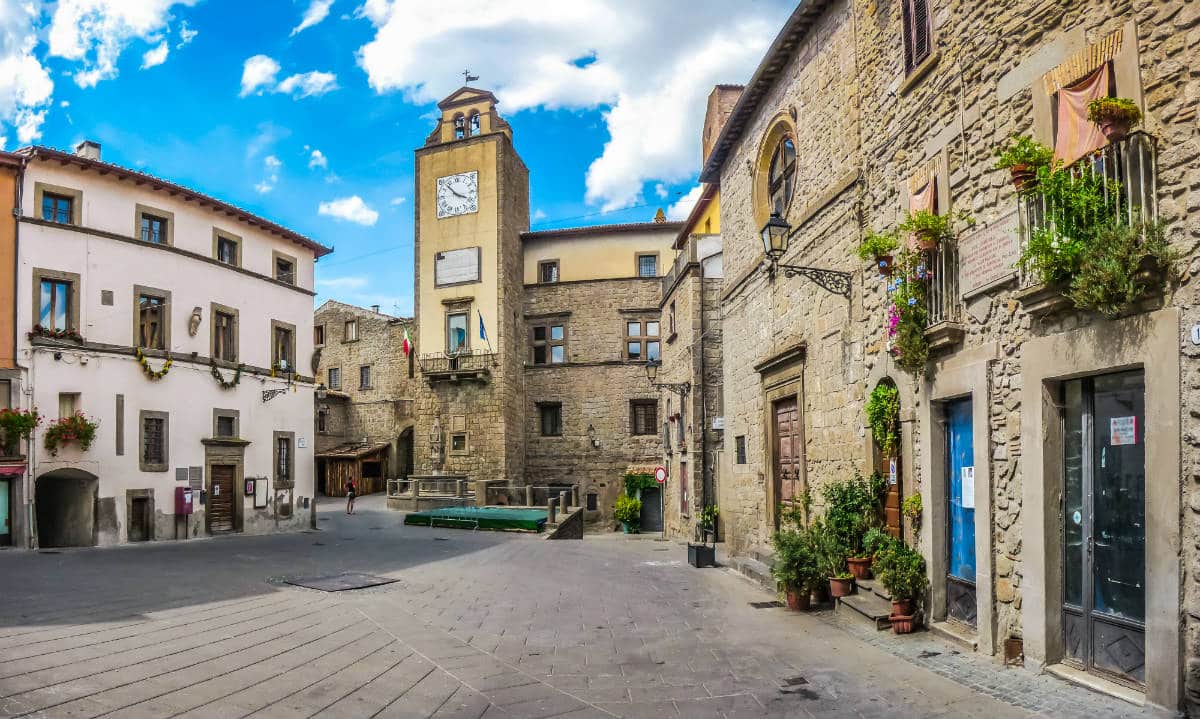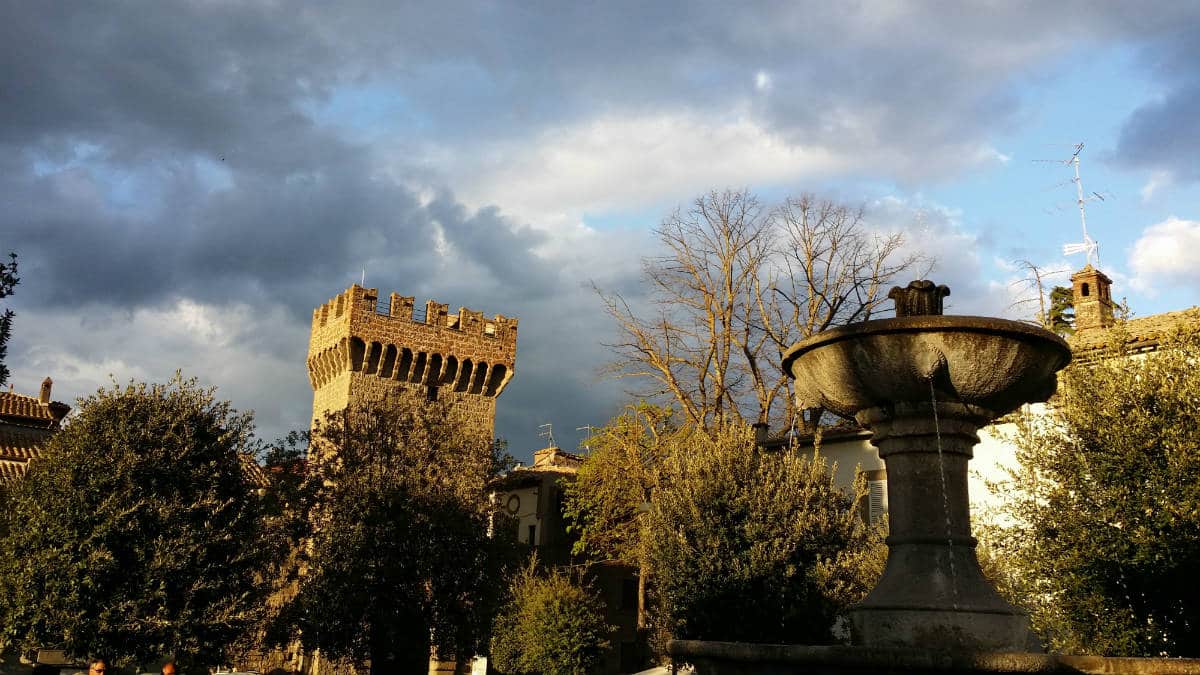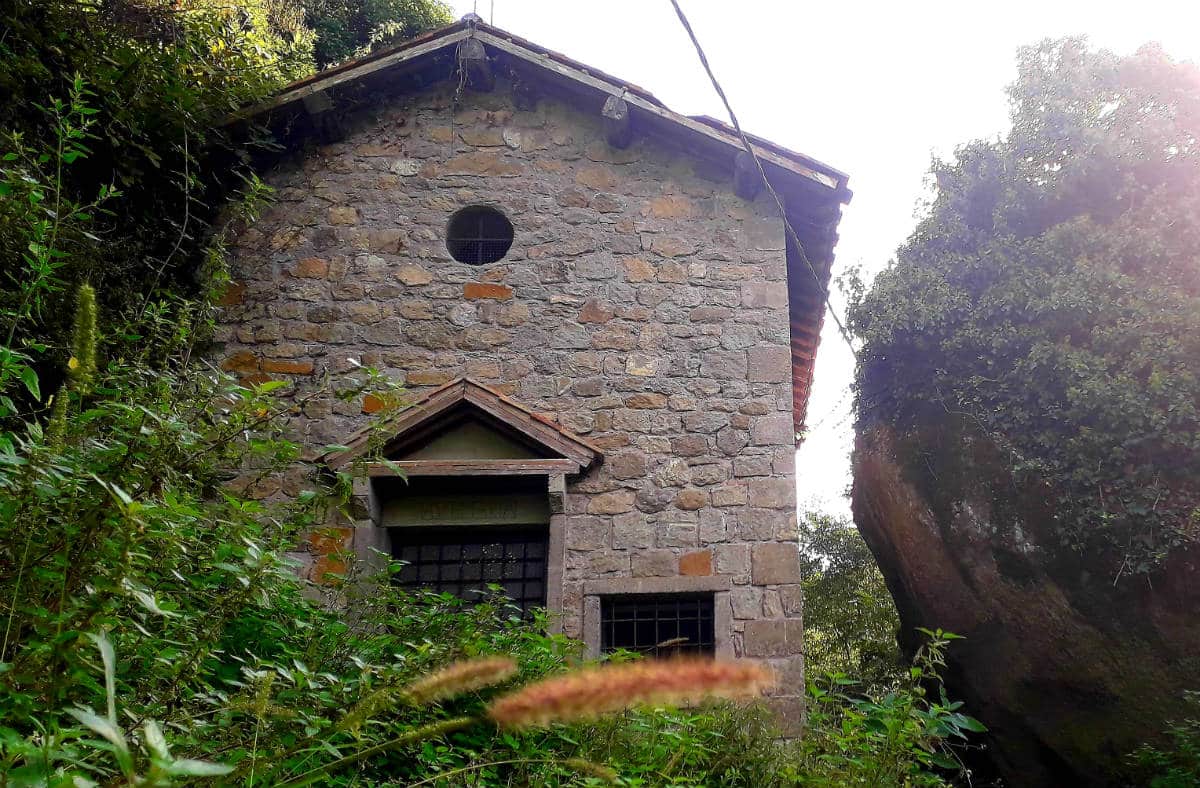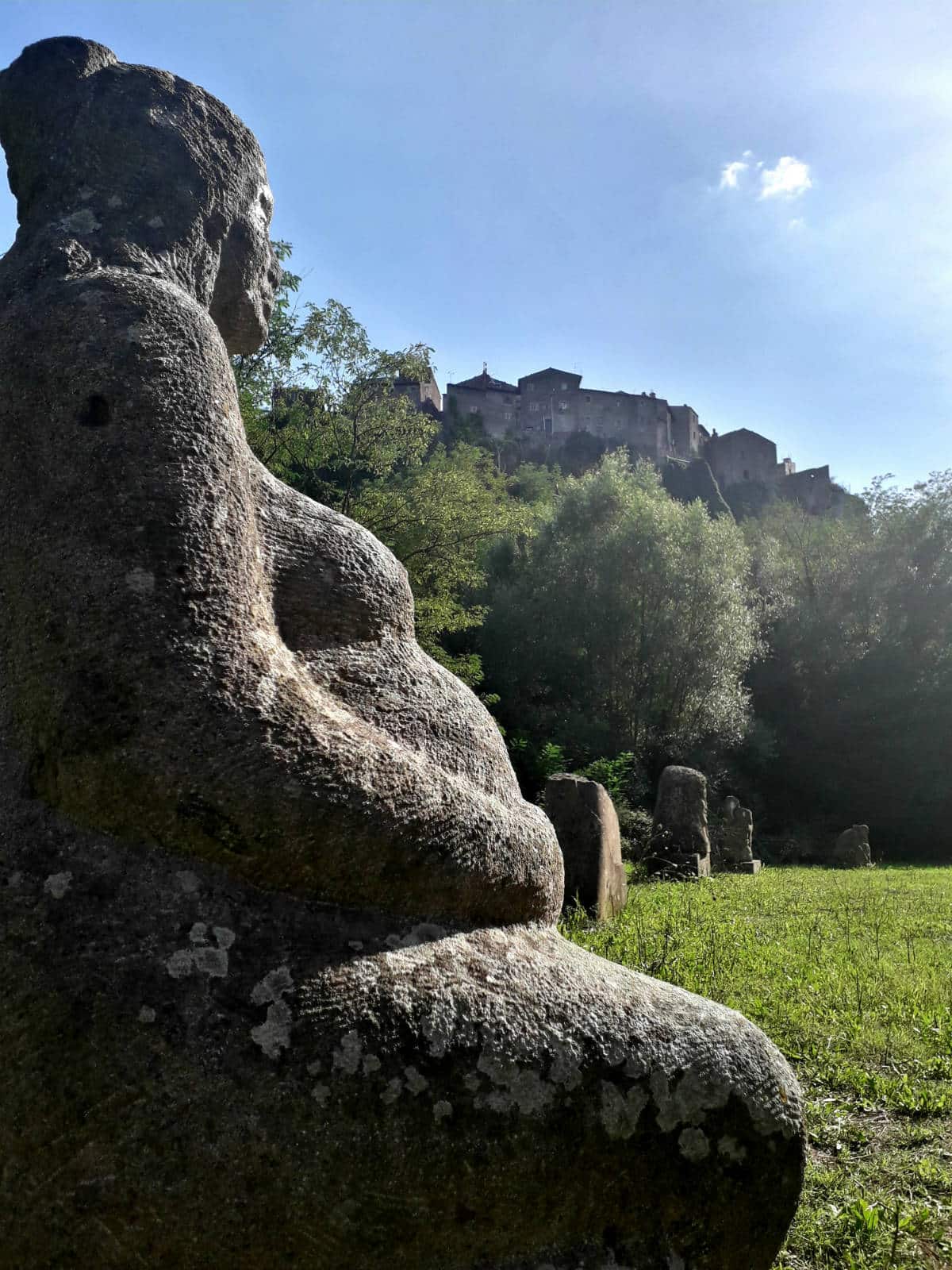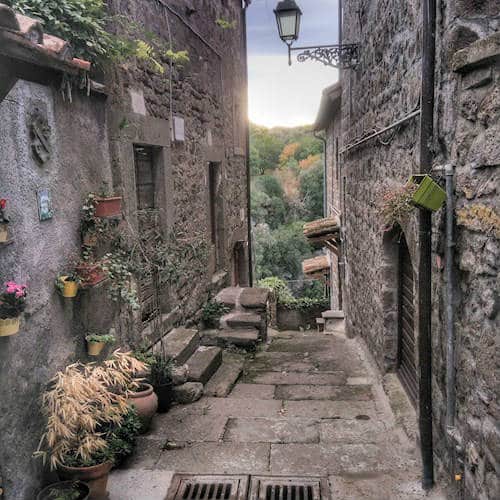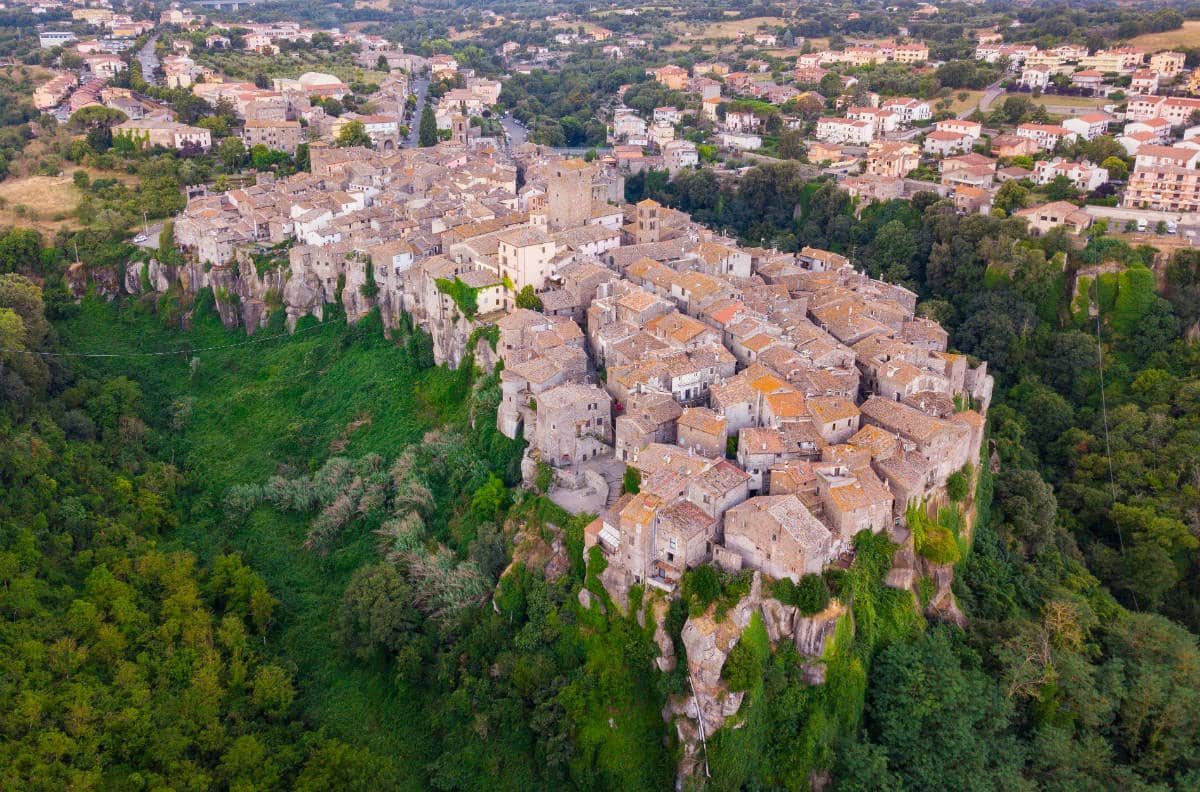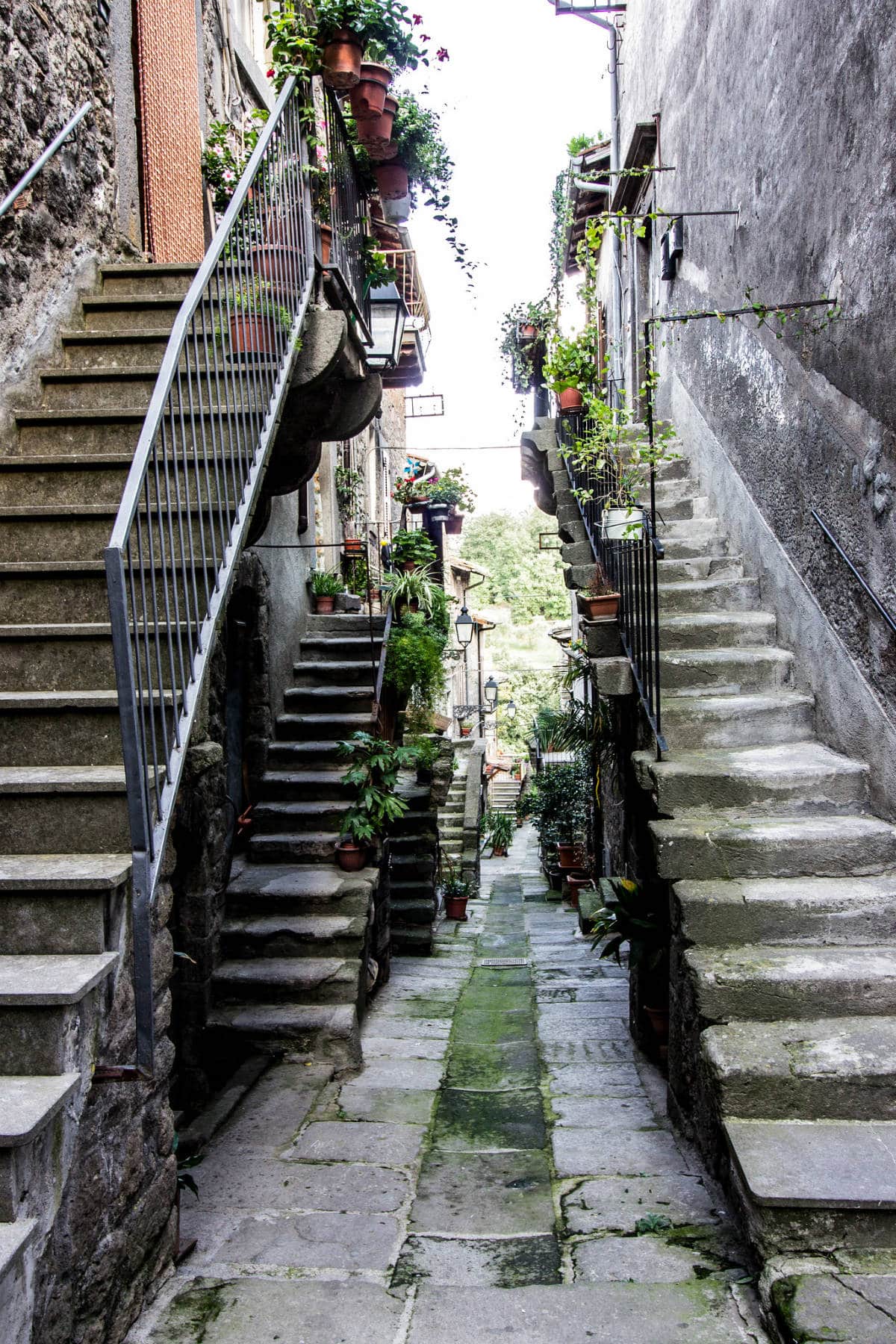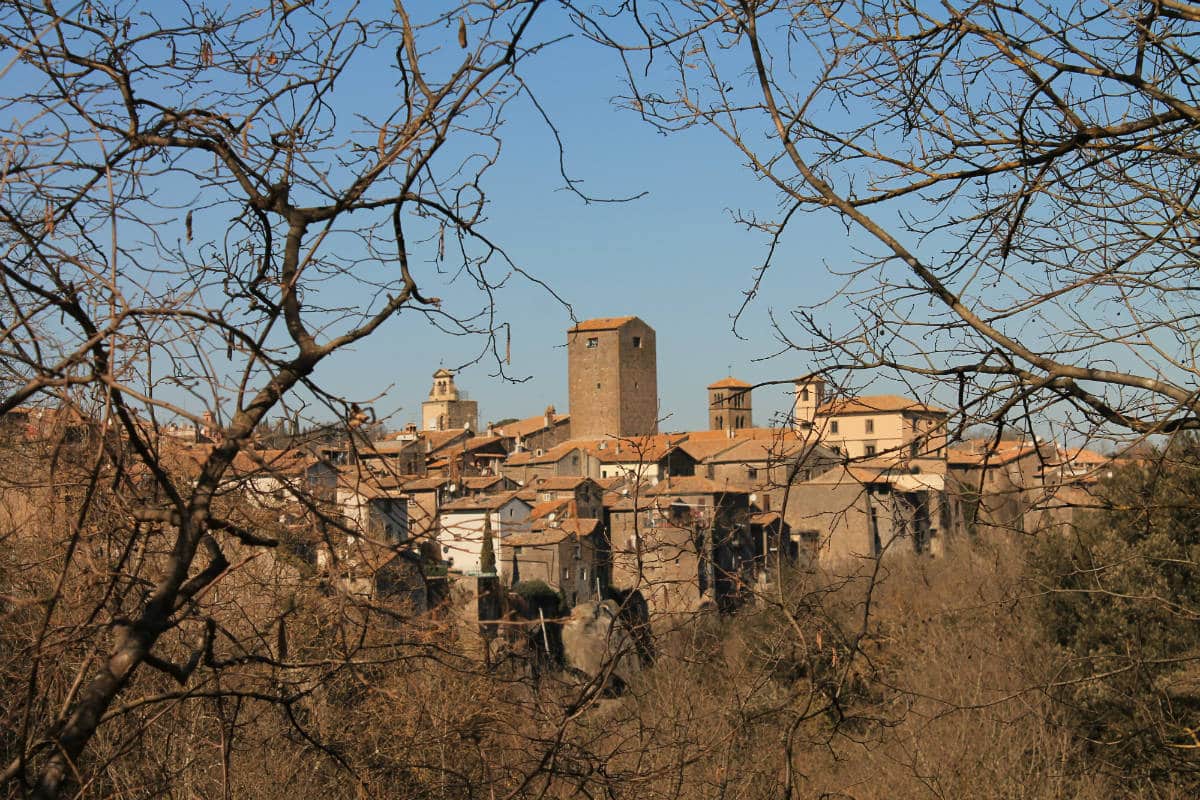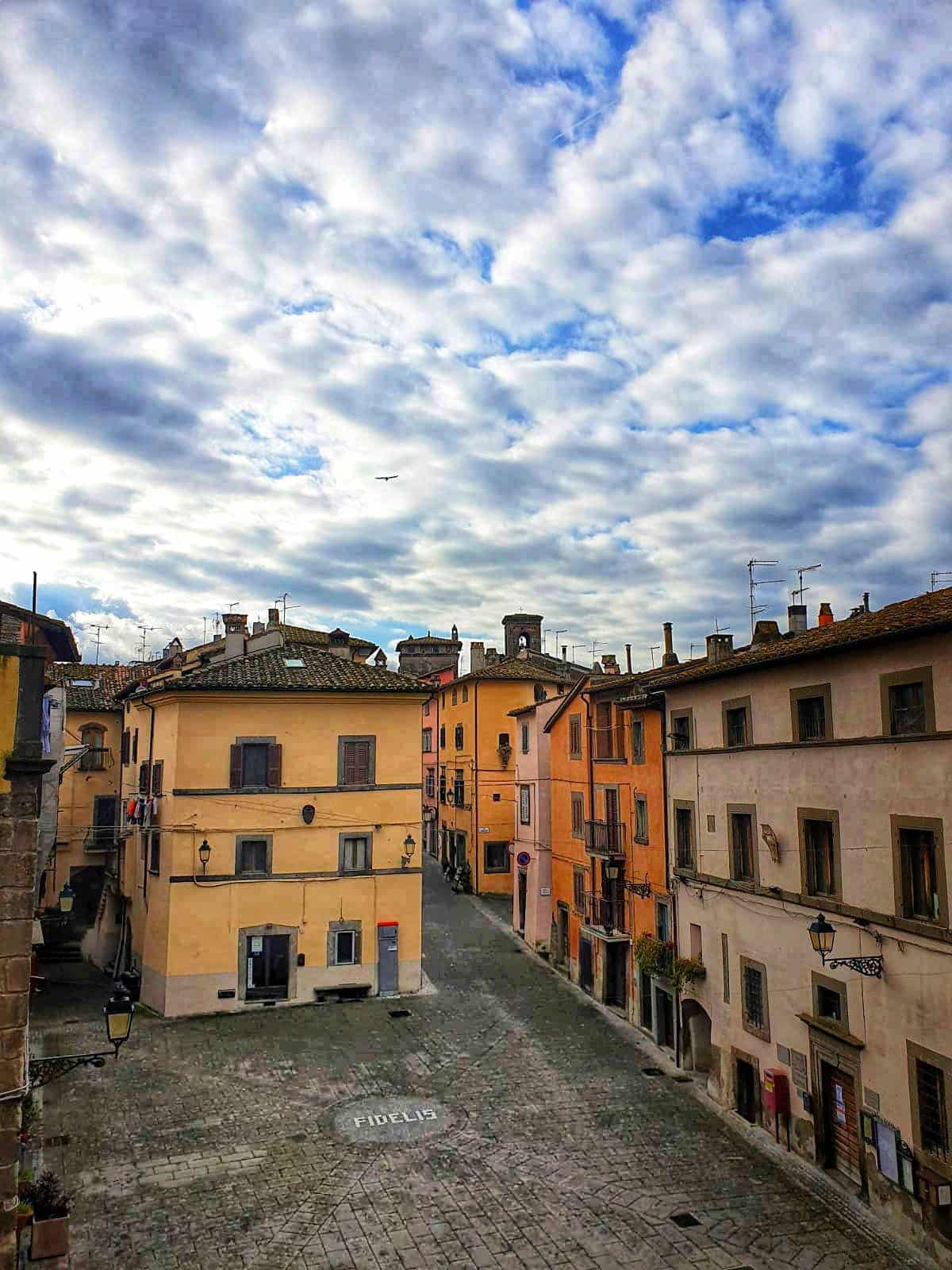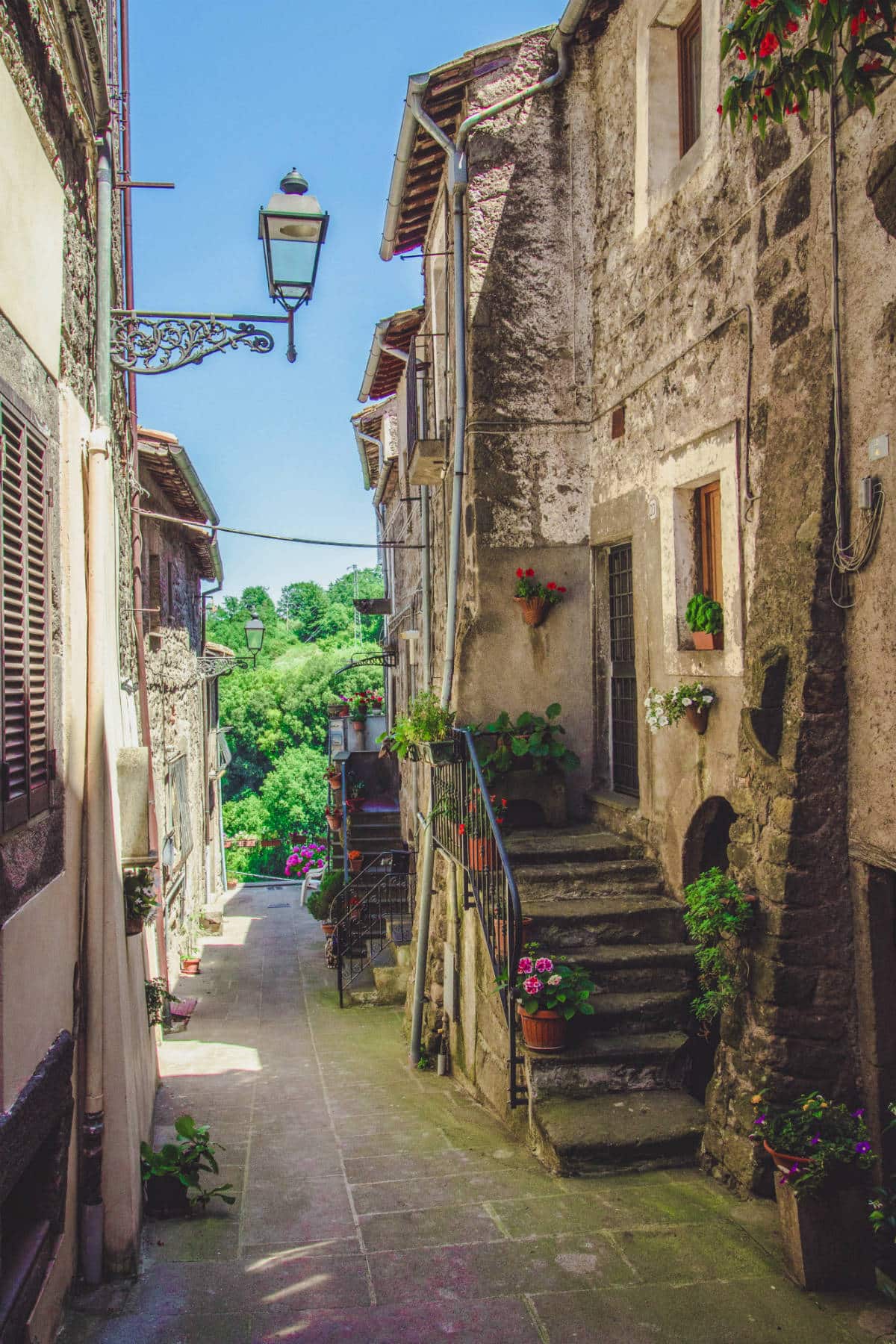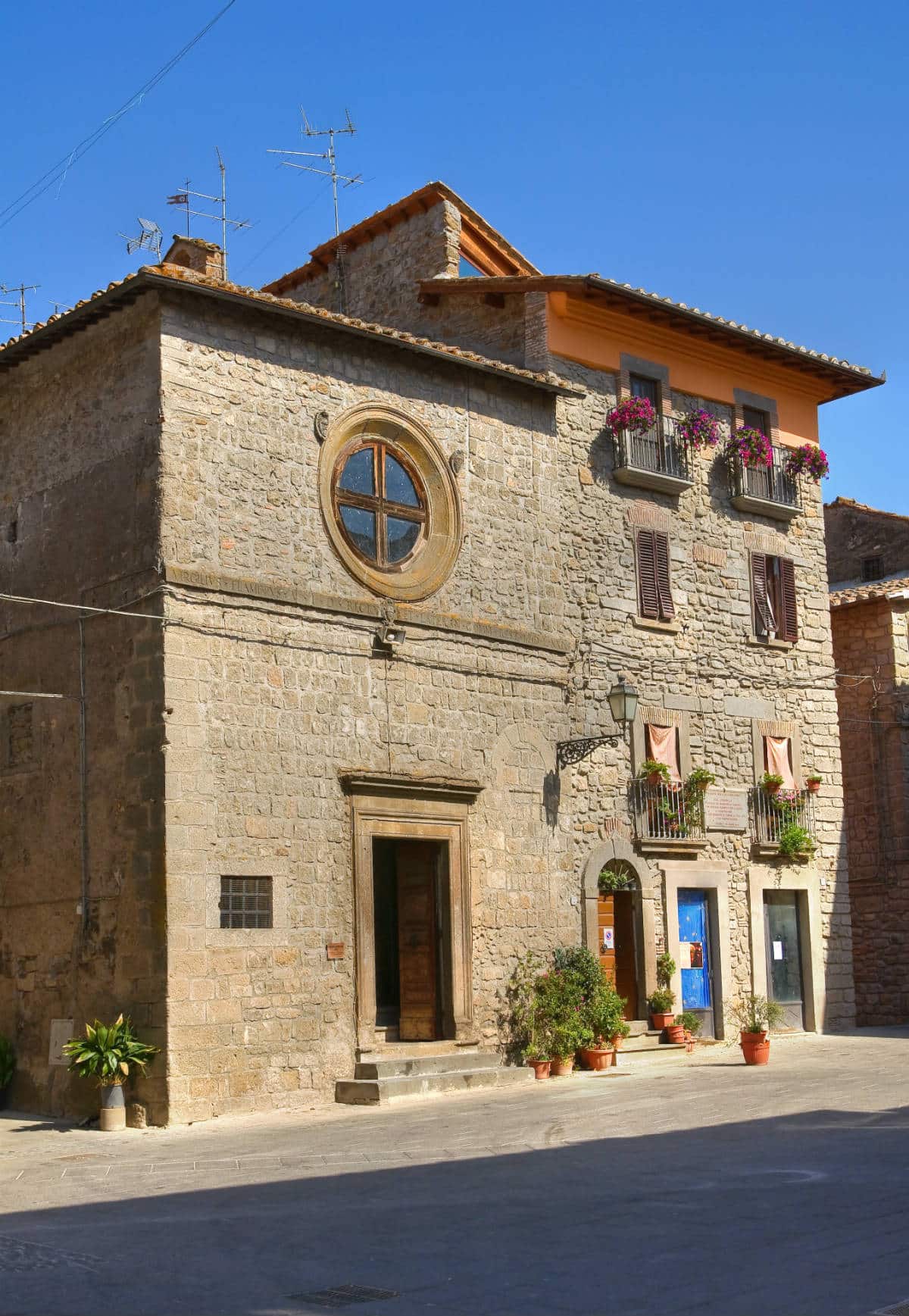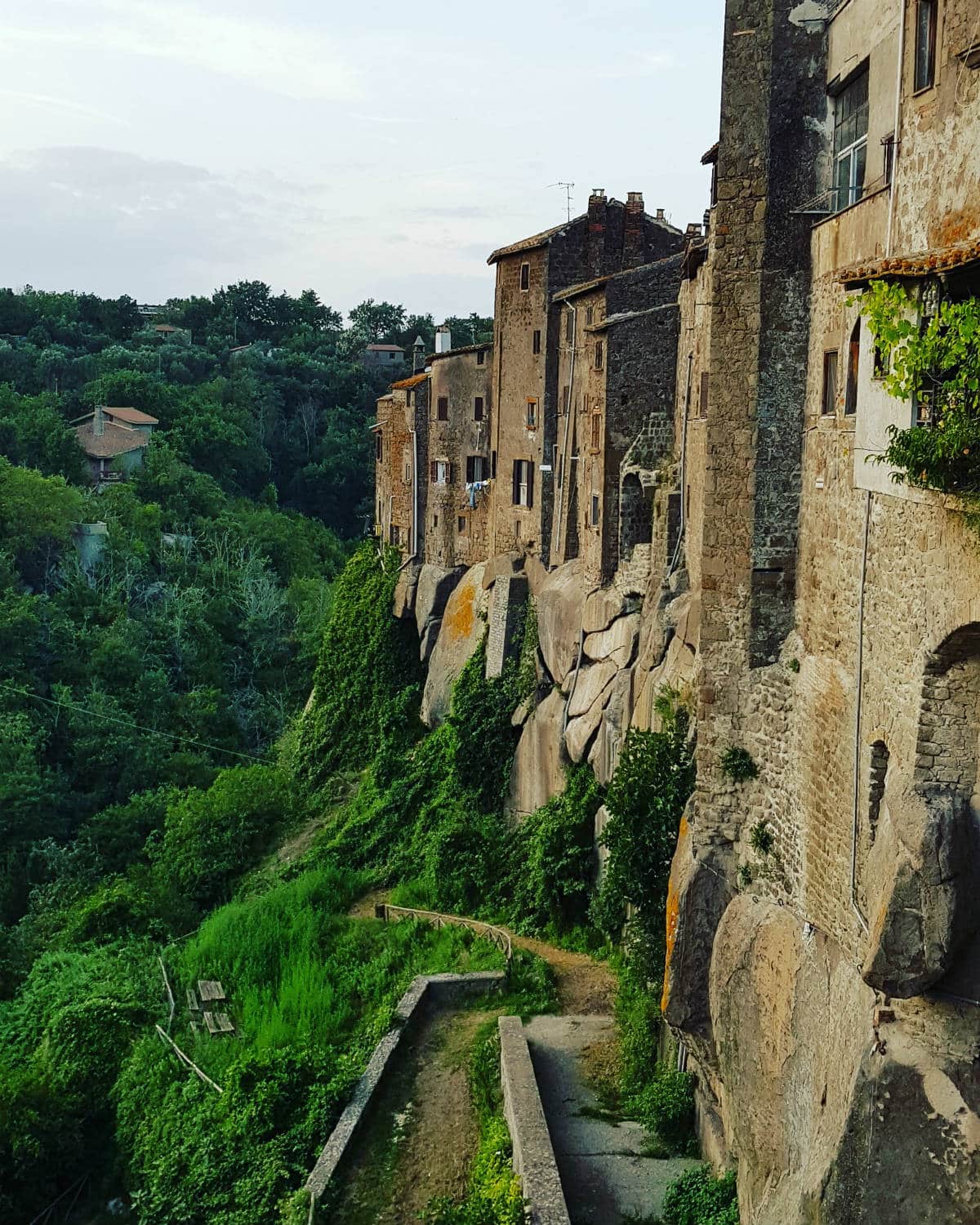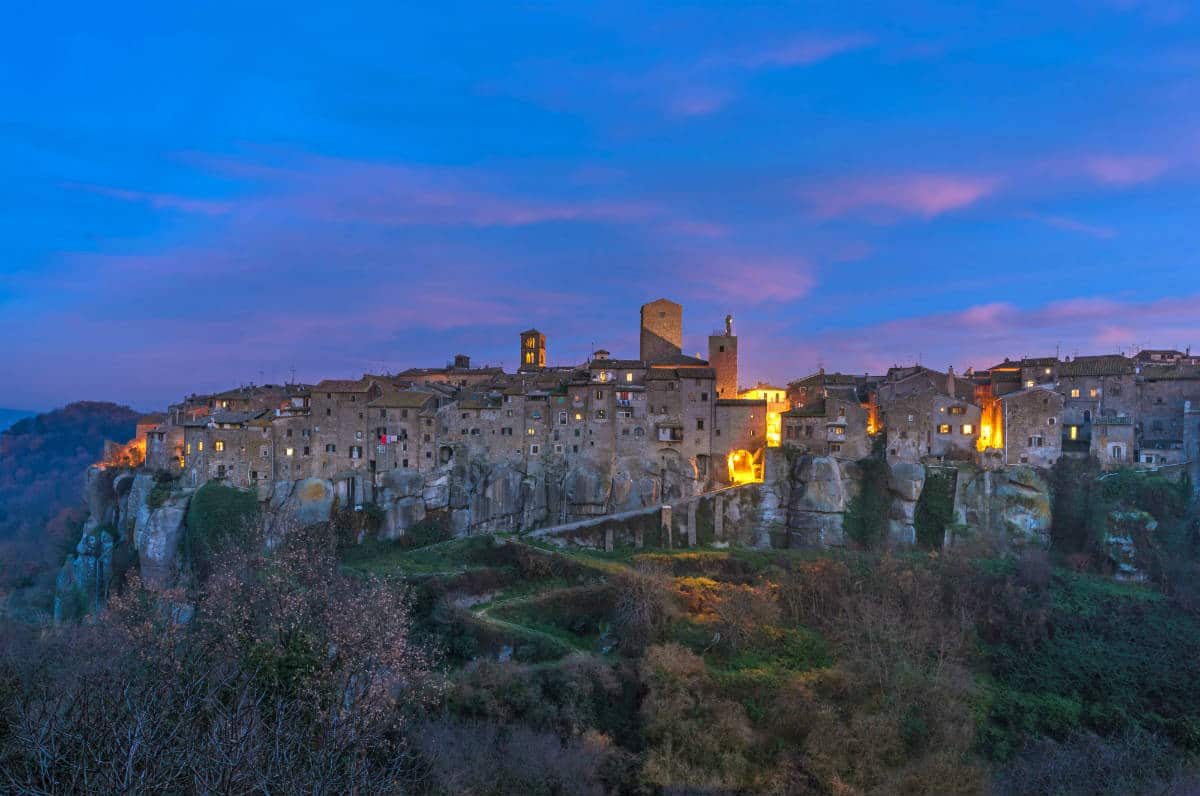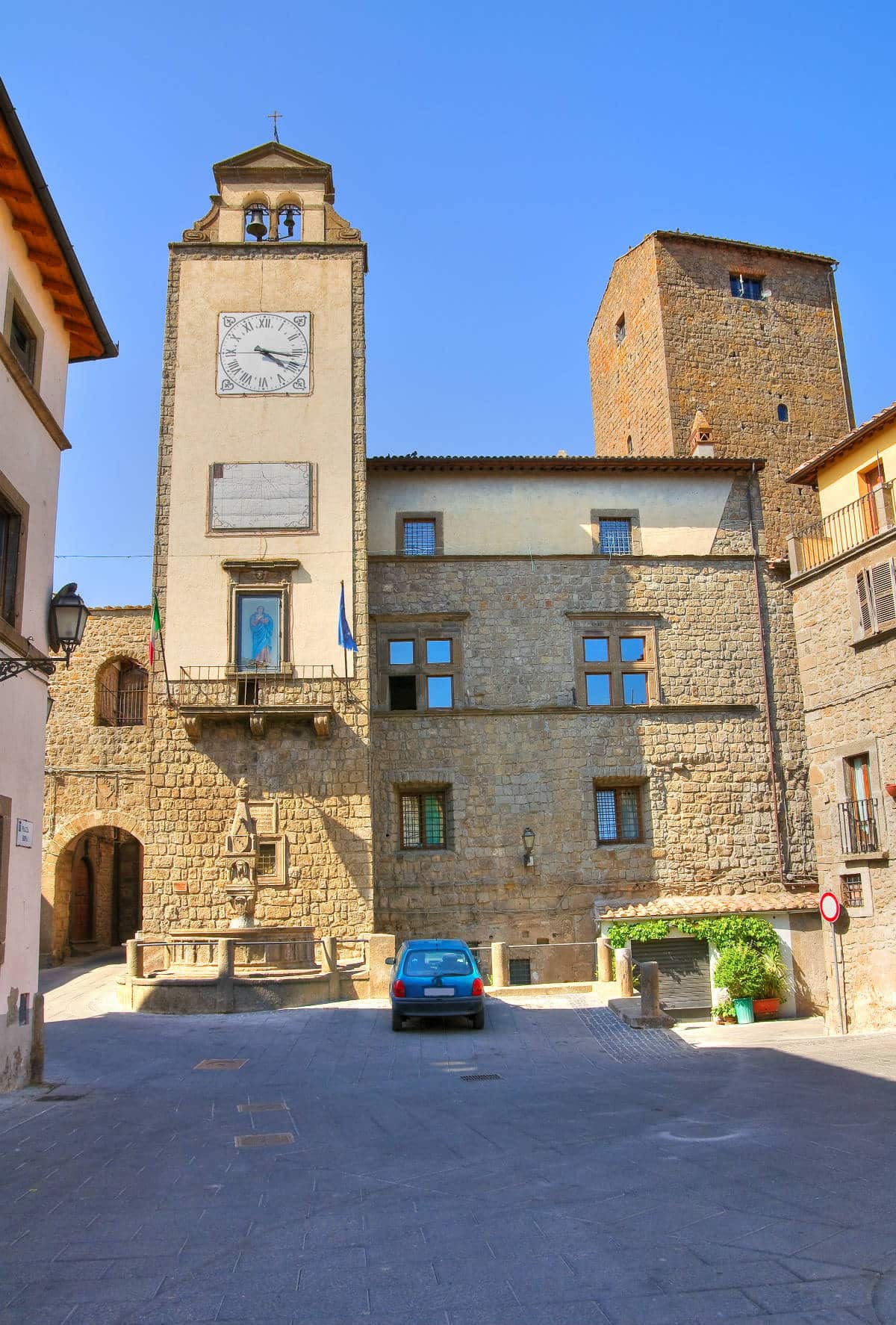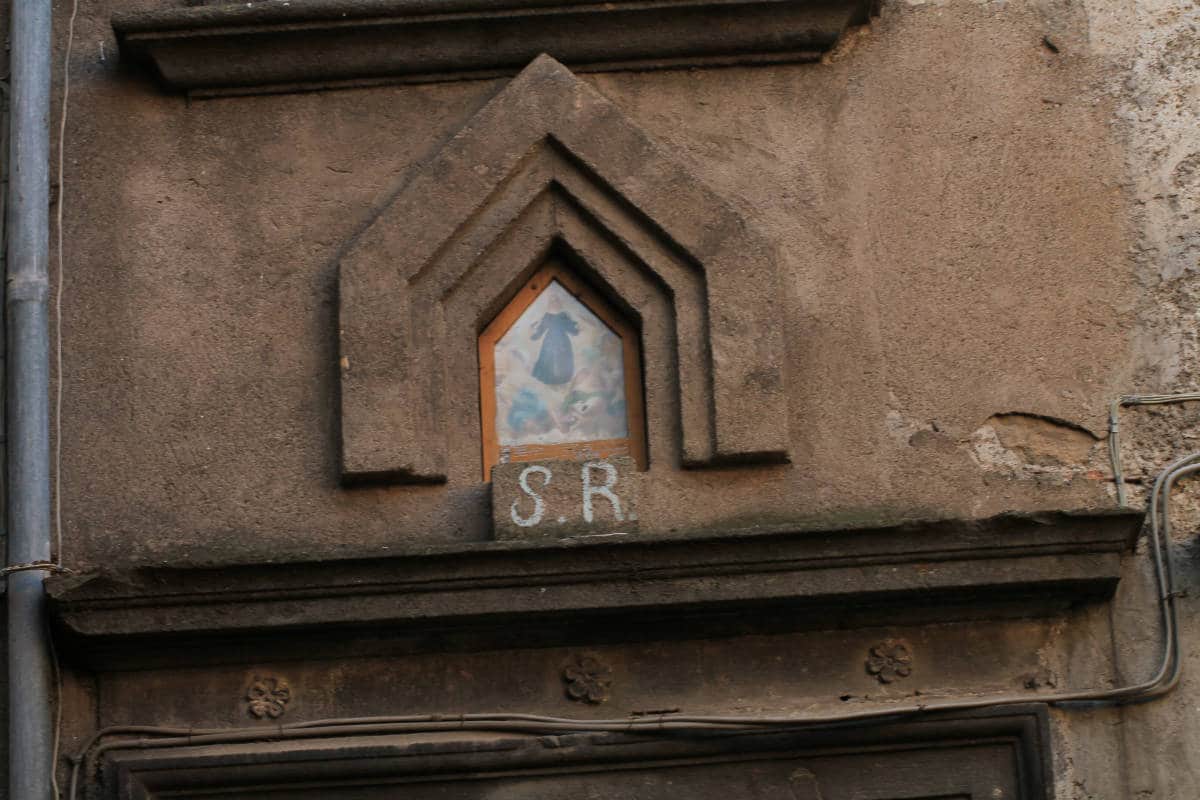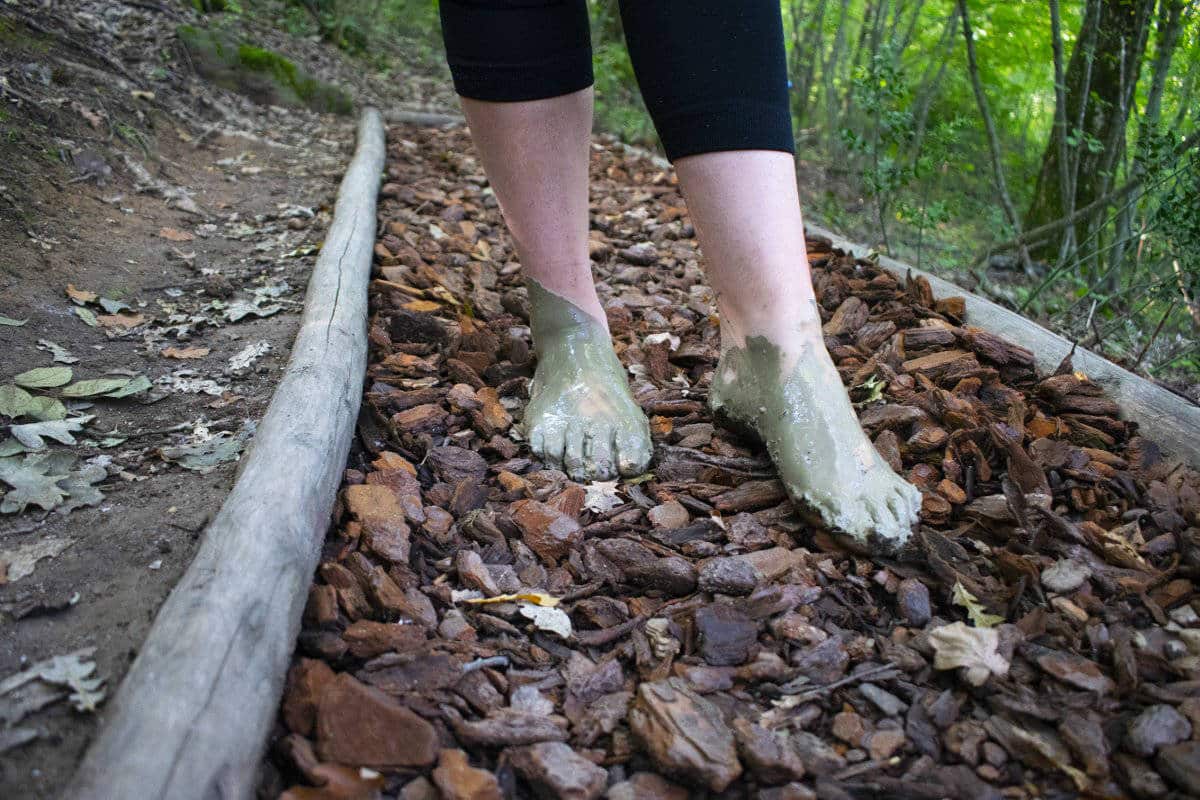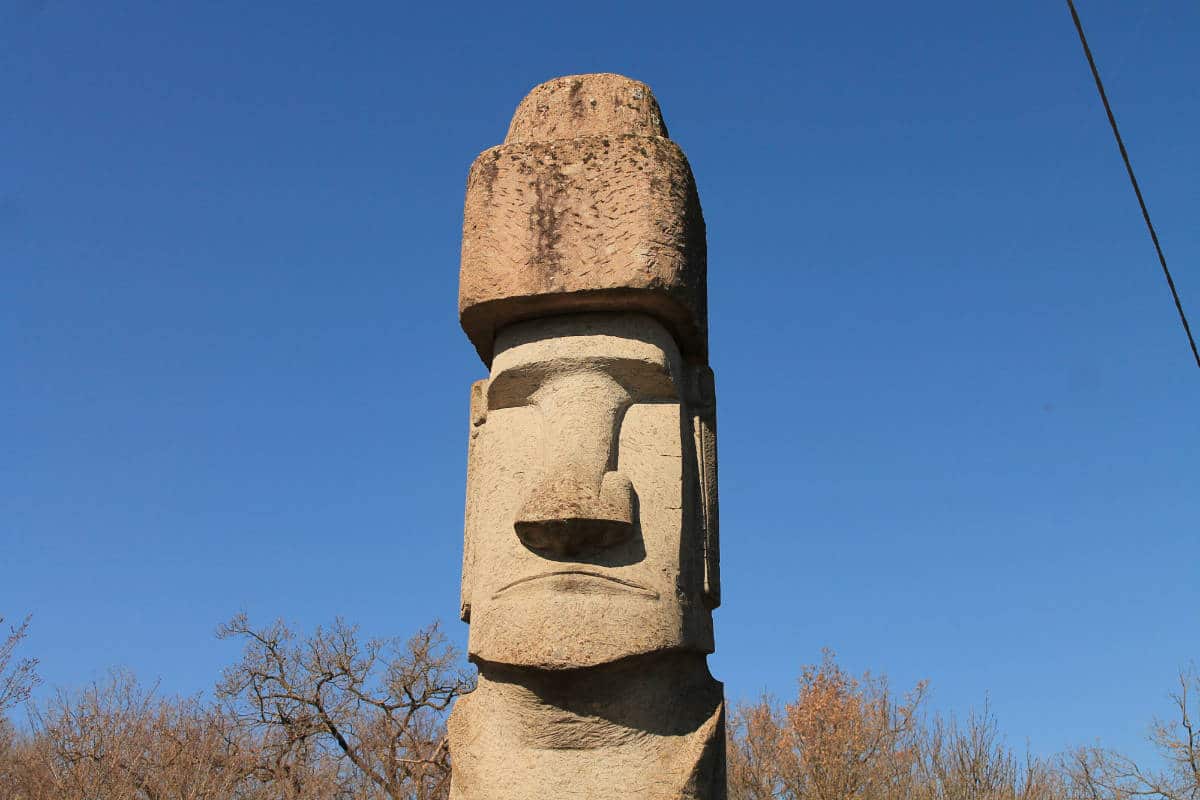Vitorchiano is a small medieval village leaning on huge blocks of peperino, a local volcanic rock. Its name derives from the name of this rock and due to its position it is also called "Hanging Hamlet". Its origins seem to date back to the time of the Etruscans, but it was also inhabited in Roman times.
A particular characteristic of the village is the presence of two defensive walls.
The history of Vitorchiano is linked to that of the nearby Viterbo. In 1199 Vitorchiano declared himself free from all ties with Viterbo and for this reason he was besieged by the Viterbo militias against which Rome's aid was invoked. In 1201 Vitorchiano was liberated and became a feud of Rome under which the inhabitants were submitted.
The Roman Senate then named Vitorchiano "Terra Fidelissima Urbe", allowing it to add to its emblem the initials S.P.Q.R., to bear the Capitoline Wolf and to use the motto "Sum Vitorclanum castrum membrumque romanum", i.e. “Vitorchiano, castle and part of Rome”.
The most important privilege was to provide the men for the Capitoline guard, called "Fedeli di Vitorchiano". Even today it is possible to admire the Capitol Guard in the official manifestations of the municipality of Rome. They wear the costumes that, according to tradition, were designed by Michelangelo Buonarroti,
The peperino is a volcanic origin rock, typical of Tuscia area. It is characterized by the presence of black biotite particles, similar to peppercorns; hence the name peperino which derives from the Latin piper. The classic colour is mottled gray and it is used in construction. The ancient village of Vitorchiano, in particular, is entirely made of this material and is leaning on huge blocks of peperino.


